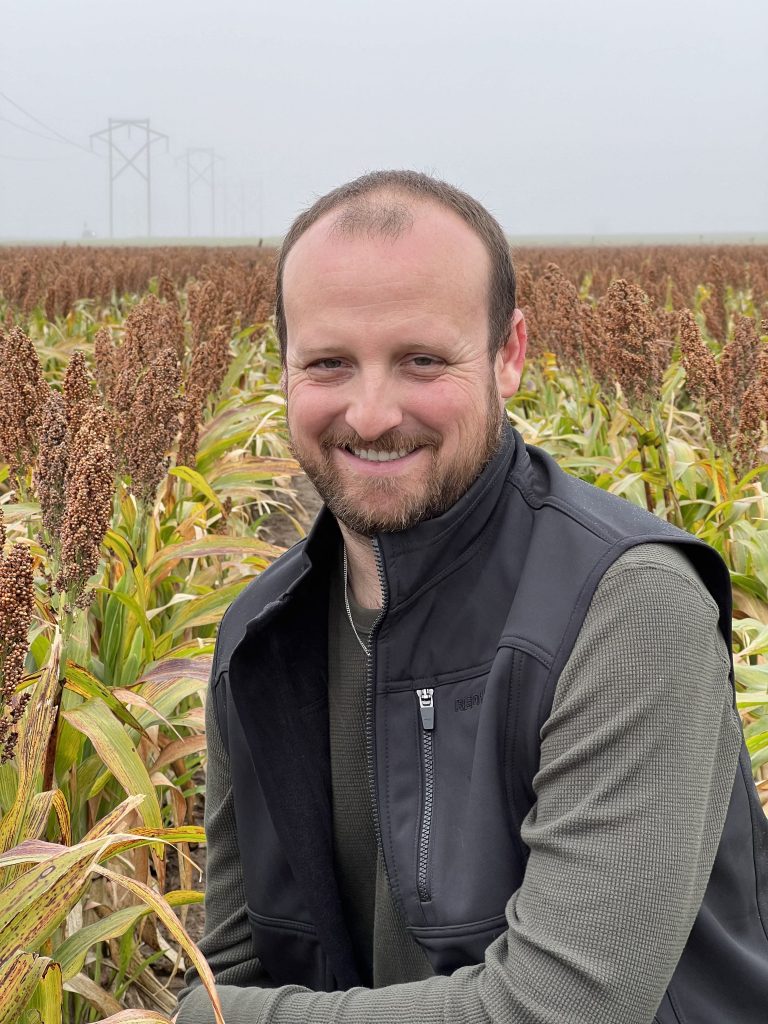Sorghum’s benefits in sustainability are helping advocates lead the way into more market opportunities for the resource-conserving crop
The United Sorghum Checkoff Program and National Sorghum Producers hail sorghum as “The Resource Conserving Crop” because of a myriad of benefits that the crop provides, both for agronomic conservation practices and for biodiversity.
“Sorghum has been a favorite in conservation crop rotations since the days of the Dust Bowl when farmers began using higher residue crops and tilling less as a way to keep topsoil from blowing away,” says John Duff, Strategic Consultant, United Sorghum Checkoff Program and National Sorghum Producers. “It uses one-third less water than corn, tolerates the heat well, has a root system that fuels tolerance and allows the plant to scavenge for nutrients and sequester carbon and it provides food and habitat for wildlife.
“Also, it checks many boxes on the modern consumer’s grocery list as an ancient grain that delivers plentiful amounts of protein, fiber, iron and antioxidants.”
For Duff and his team of sorghum advocates, these benefits are being used to develop pathways for new opportunities for the crop that span agriculture’s value chain.
America’s Conservation Ag Movement (ACAM) talked with Duff about the potential he sees for the crop’s future and its role in building a more sustainable future for agriculture.

United Sorghum Checkoff Program and
National Sorghum Producers
How does sorghum fit into integrated operations where regenerative practices are being used?
Given that sorghum residue grows with yield, modern hybrids that are yielding more are also leaving more residue behind, increasing sorghum’s effectiveness as a tool for farmers looking to deploy regenerative practices that replenish the soil. Sorghum also has a beneficial, and possibly even synergistic effect on productivity when grown in rotation with other crops, often increasing both corn and cotton yields grown after it.
Additionally, water is our most precious resource. If it’s not plentiful or safe to drink, nothing else really matters. As a result, sorghum’s status as a water-sipping crop makes it particularly well-suited to modern environmental challenges surrounding water quality and quantity. Fortunately, the crop can be used as an agent of water savings in a multitude of ways. From outright substitutions for more water intensive crops to using sorghum as a water management tool in rotation with more water intensive crops, there are myriad ways sorghum can help farmers manage declining water.
How are United Sorghum Checkoff Program and National Sorghum Producers working to leverage these benefits into enhanced or additional market opportunities for sorghum growers?
Fortunately, there’s a lot of inherent knowledge of sorghum as The Resource Conserving Crop®. In many ways, a drought tolerant crop that’s largely produced as a part of conservation crop rotations is generally accepted to be a good cropping option from a sustainability perspective. This head start has provided us with a good jumping off point for current efforts, and it means we haven’t had to undo much damage from bad information in the public consciousness. As a result, we’ve tried hard to leverage that existing reputation and build toward the future we want our farmers to have. This strategy has worked, and we’re seeing opportunities in diverse markets from food to those driven by carbon.
For example, sorghum is a great biofuel feedstock. It performs just as well as corn in first-generation biofuel production, and varieties like biomass and sweet sorghum is some of if not the most competitive options for second-generation biofuel production. However, its true benefits will come in the form of the sustainability story that can be told around the biofuel produced from it. The Sorghum Belt is an environmentally optimum place to grow crops, and sorghum is one of the best cropping options in it. This fact can be seen in the carbon intensity scores of many sorghum biofuel producers, and the benefits associated with delivering low carbon fuel will add significant value to sorghum farmers going forward.
For nutrition, the opportunities are endless. Given that sorghum is an ancient grain that delivers plentiful amounts of protein, fiber, iron and antioxidants, much work has gone into developing the crop for food markets. While this work has been going on for decades, sorghum as a food crop is still in its infancy. There’s a long way to go to make the crop a household name and a staple of American pantries, but with the attributes the crop delivers plus its sustainability story, I believe the future is very bright in these markets.
In addition to nutrition concerns, modern consumers are increasingly mindful of the climate impacts associated with their purchasing decisions. Given the share of the crop produced using conservation tillage practices, its water-sipping nature and its positive impact on biodiversity, sorghum has the ability to deliver profound value to consumers in many ways. Storytelling is key to capturing this value inside the farmgate but the story is only as good as the data behind it, and the data is growing more compelling by the day.
How are you using data to tell sorghum’s sustainability story?
The data is growing more compelling because the scope of our data collection efforts are increasing by the day. We’ve collected an astonishing amount of data over the last 15 years compared to many other crops, but our current efforts, via the National Sorghum Producers Partnership for Climate-Smart Commodities award, will increase the amount of sustainability data at our fingertips exponentially. And, it will do so each year for the next five years. We’re currently exploring options to expand our efforts even more, and such an expansion would make sorghum produced in the U.S. the most well-understood crop in the world from a sustainability perspective.
United Sorghum Checkoff Program and National Sorghum Producers often utilize coalitions and partnerships to help achieve sustainability goals. Can you tell us about one recent example that has benefitted sorghum?
Working with organizations like Quail Forever and Pheasant Forever have been invaluable to us.
Sorghum is on a completely different level when it comes to providing for wildlife, and these partnerships have allowed the crop, its farmers and the industry that supports it to lean into this strength. The partnership has also shed light on different management strategies that can lead to outcomes worth more than the sum of their parts. For example, every farmer has that piece of land that always floods. Our wildlife partnerships have shown that retiring some of these acres can lead to more profitability while creating wildlife habitat. That’s a new way of thinking about farm management, and it creates opportunities for win-win situations.
Is there an avenue of growth for the short-term in sorghum that makes you excited about the future?
Sorghum makes a lot of sense in dry and limited water environments, and the past couple of years were no exception. Even sorghum struggled in 2022 and 2023, but in many cases, the crop was the difference between a farmer having a crop and not having a crop. This was particularly true in areas with heavy forage demand, such as those on the plains where there are millions of beef and dairy cattle to feed.
We’re seeing a huge transition to forage and silage sorghums as a way to produce roughage for livestock on less water, and this is a trend that won’t reverse. In these areas the name of the game is maximizing roughage produced per acre-inch of water applied. Sorghum does that in spades.



